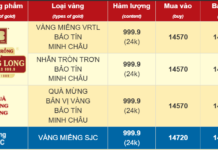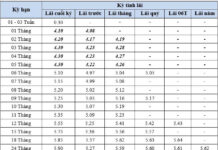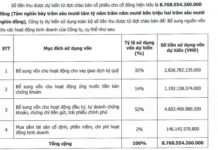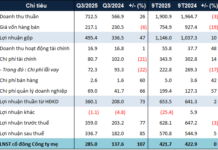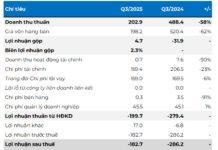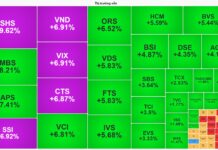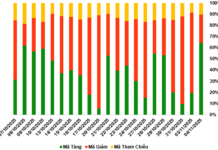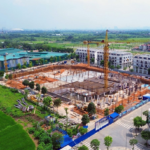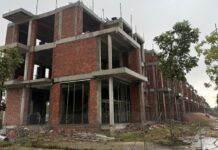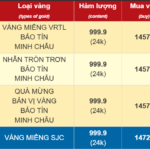The Vietnam Association of Realtors (VARS) reports a significant increase in young buyers entering the real estate market, particularly in the apartment segment, since 2019. Buyers aged 25–35 now account for over 40% of transactions on average, with some projects reaching up to 70%, far surpassing previous generations.
A prior study by Batdongsan revealed that since 2023, the primary demographic driving real estate demand has shifted to younger age groups. Those aged 22 to 39 are now the main homebuyers, replacing the over-40 demographic. Notably, 66% of property demand comes from individuals aged 27–40, while the 45–60 age group has dropped to 34%. Approximately 66% of buyers under 35 are willing to take out loans to own at least one property.
A recent survey by One Mount Group highlights that the core buyers of condominium apartments are aged 35–44. Significantly, younger buyers aged 18–34 are increasingly contributing to home purchases, with a rate exceeding 27%. This trend underscores the growing youthfulness in homeownership demand.
According to VARS, the primary reason young people find it easier to own homes than previous generations is Vietnam’s golden demographic period, with over half of the workforce under 35 and substantial housing demand. Additionally, many young individuals achieve financial independence early by leveraging technology, e-commerce, digital content creation, or digital asset investments. Family support, either partial or substantial, also accelerates their homeownership timeline.
Flexible credit policies and sales strategies from developers further facilitate young buyers’ entry into the market. Banks offer attractive loan packages tailored to youth, while developers provide staggered payment plans or favorable loan options, making homeownership more accessible.
 Prospective buyers explore a project in Ho Chi Minh City. Photo: PDG |
Young buyers’ preferences differ from older generations. Instead of saving for years to buy land in central areas, many opt for affordable apartments in suburban areas with modern amenities and connectivity, aligning with their contemporary lifestyles.
Trần Minh Tiến, Director of Market Research at One Mount Group, notes the increasingly prominent trend of younger buyers. The desire for independence and early personal space drives housing demand. Over the past three years, property searches by those under 35 have surged, fueled by technology-driven high-income opportunities. This makes homeownership more attainable for Gen Y and Gen Z.
Tiến adds that amid the real estate market’s challenges, the 45–60 age group, traditionally major asset holders, has reduced transactions, creating opportunities for younger buyers. To achieve homeownership, many accept locations outside city centers, targeting suburban apartments priced between VND 2–4 billion.
However, VARS cautions that only a small fraction of young buyers can afford homes, despite growing demand. Most face slow income growth, high debt pressures, and rising living costs. Data from the Vietnam Institute of Real Estate Research (VARS IRE) shows that over the past decade, apartment prices in major cities have surged far beyond average income growth. In Q2 2025, Hanoi’s average apartment price rose 88% since 2019 to VND 75 million per square meter; Da Nang increased nearly 70% to VND 66 million; and Ho Chi Minh City climbed over 48% to VND 77 million.
In contrast, income growth has been sluggish. In Hanoi, average monthly income rose from VND 4.1 million to VND 8.3 million over nearly a decade, a 6.4% annual increase. In 2014, a middle-income family needed nearly 18 years to save for a VND 1.75 billion, 70-square-meter apartment. By mid-2025, with prices exceeding VND 5 billion for a similar unit, the savings period extends to 27 years if allocating all income. This could stretch to 80 years if following the international recommendation of allocating one-third of income to housing.
While some young buyers lead the housing market, experts emphasize that most struggle financially to achieve homeownership. Many delay purchases or opt for long-term rentals to balance living costs and avoid debt burdens. With limited initial savings, young buyers rely heavily on financial support from developers and banks.
VARS IRE stresses that without fundamental policy solutions, such as expanding affordable and social housing and controlling price levels, homeownership remains elusive for most young people. Real estate remains attractive to the younger generation, but market realities and policy adjustments are essential to make it accessible to the majority.
Phương Uyên
– 15:56 15/09/2025
Van Phu Named Among Vietnam’s Top 10 Most Valuable Real Estate Brands of 2025
In the recently released report by Brand Finance, the world’s leading brand valuation and ranking organization, Van Phu has made its debut in the Top 10 most valuable real estate brands in Vietnam. Additionally, for the second consecutive year, Van Phu has secured its position in the Top 100 most valuable brands in Vietnam for 2025.
The New “Taste” of Home Buyers in 2025
In the ever-evolving landscape of modern living, a new generation of discerning individuals is emerging, demanding a higher standard of lifestyle. This shift in paradigm paves the way for innovative real estate ventures that offer not just ideal residential solutions but also prudent long-term investment opportunities.
The Real Estate Market: A Wealth of Opportunities.
As of Q2 2025, real estate inventory levels climbed to new heights, with many businesses burdened by massive work-in-progress assets, accounting for up to 85% of their total holdings in some cases. This paints a picture of mounting pressure on companies to alleviate this mounting inventory conundrum.






